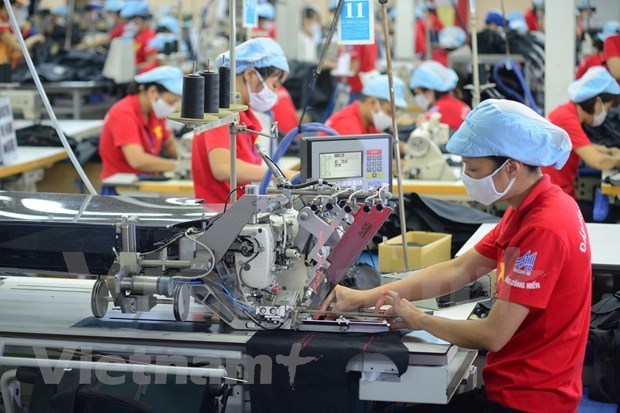Vietnam's economy to sharply rebound in H2: Standard Chartered
Vietnam's economic recovery will be stronger in the second half of 2022, particularly as the country resumed its tourism activities after a two-year closure, according to Standard Chartered's latest Vietnam report.
 Illustrative image (Photo: VietnamPlus)
Illustrative image (Photo: VietnamPlus)The report said the Vietnamese economy will continue recovering in August as the recovery has shown signs of broadening.
The bank maintained its forecast for Vietnam's GDP growth at 10.8% and 3.9% in the third and fourth quarters of this year, respectively, taking the full-year growth to 6.7%.
Tim Leelahaphan, Standard Chartered Economist for Thailand and Vietnam, said the recovery would accelerate remarkably.
However, he also warned that high global oil prices might negatively impact the Vietnamese economy.
The report said that retail sales are estimated to grow at 60.2% in August, from 42.6% in the previous month.
This month, industrial production, export and import are expected to increase by 15.2%, 15% and 15.2%, respectively, compared to 9.8%, 3.4% and 11.2% in July.
Vietnam may record a trade deficit in August, which will likely stand at around 1.4 billion USD.
Electronic products remained the country's biggest currency earner.
Experts of Standard Chartered said inflation is projected to stand at 3% in August, compared to 3.2% in July, which is within a manageable level.
However, price pressure may increase in the second half of 2022 and 2023.
The bank recommended the State Bank of Vietnam be wary of financial instability risks.
According to SBV Governor Nguyen Thi Hong, the central bank is expected to keep the credit growth rate unchanged at 14% this year, although there are opinions that it is necessary to loosen the credit room to reduce the congestion of capital into the real estate market.
Banks may face greater liquidity risk as credit in the real estate field accounts for a large proportion, with up to 94% of real estate credit balances having loan periods ranging from 10 to 25 years, while 80% of the capital mobilized by banks is short-term.
The SBV said credit growth since the beginning of the year has expanded by 9.4% compared to the end of 2021. Real estate loans accounted for one-fifth of the total credit of the whole banking system.
According to the World Bank (WB), Vietnam's GDP growth is likely to expand by 7.5% in 2022 and 6.7% in 2023, with resilient manufacturing and a robust rebound in services serving as the driving forces for economic recovery.
In its economic update early this month, the bank said the country's economy expanded 5.2% in Q4 of 2021, 5.1% and 7.7% in Q1 and Q2 of 2022. As a result, inflation is projected to average 3.8% over the year.
According to Michael Kokalari, chief economist at VinaCapital, one of the country's leading investment management and real estate development companies, Vietnam's stock market should be one of the biggest beneficiaries of the US Federal Reversal (Fed) 's pivot because the country has the most attractive valuation in the region and the second highest expected earnings growth next to Indonesia.
He believed that Vietnam's corporate earnings quality is currently much better than that of Indonesia and other regional peers.
Meanwhile, Hong Kong and Shanghai Banking Corporation (HSBC) experts have also predicted that Vietnam's economy will continue to gain traction despite a less rosy external picture.
Textile, garment and footwear exports surged 30% from a year earlier. As a result, retail sales posted a record growth rate of over 55% last month compared to last year.
In particular, the revenue of tourism-related sectors was considerable, witnessing a double-digit expansion for four straight months.
Also, in July, Vietnam attracted more than 350,000 foreign tourists, tripling the monthly average in the first half and bringing total visitors to the country to over 1 million. Those from the Republic of Korea, Europe and the US accounted for nearly half of the total.
Vietnam is granting 6,000 visas per day to Indian tourists, much higher than 250 before the COVID-19 pandemic./.













